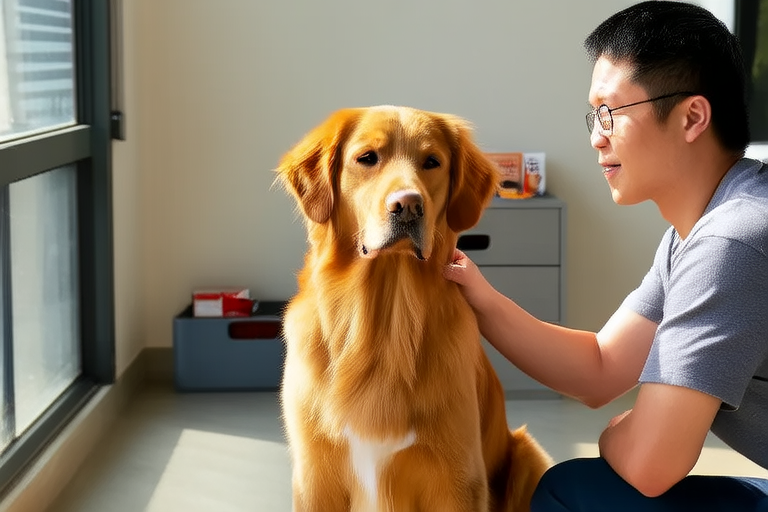Labrador Training Tips for New Pet Parents
Welcome to the wonderful world of Labrador ownership! Labradors are beloved for their friendly nature, loyalty, and intelligence, but they can also be quite energetic and require consistent training. This guide will provide you with essential training methods, address common challenges faced by new Labrador owners, offer effective communication techniques, introduce basic obedience commands, share strategies for housebreaking, provide socialization tips, suggest exercise routines, and give advice on maintaining a healthy relationship with your pet.
Essential Training Methods
Training your Labrador requires patience and consistency. Positive reinforcement is key; rewarding good behavior encourages repetition. Use treats, praise, and affection to motivate your dog. For instance, if your Labrador sits when asked, immediately reward them with a treat and verbal praise. Avoid punishment as it can lead to fear and aggression.
Common Challenges Faced by New Labrador Owners
New Labrador owners often face several challenges. One common issue is excessive barking. Labradors may bark excessively out of boredom or excitement. To manage this, ensure your Labrador gets enough mental and physical stimulation. Another challenge is chewing. Labradors are notorious chewers, especially during teething. Provide appropriate chew toys and redirect chewing behavior to these items when necessary.
Effective Communication Techniques with Your Labrador
Communicating effectively with your Labrador involves understanding their body language and vocalizations. For example, tail wagging can indicate happiness, while a tucked tail might signal fear or submission. Learn to read your Labrador’s cues to better understand their needs and emotions. Use clear, concise commands and maintain eye contact to establish authority and reinforce your leadership role.
Basic Obedience Commands
Teaching your Labrador basic obedience commands is crucial for their safety and well-being. Start with simple commands like ‘sit’, ‘stay’, ‘come’, and ‘leave it’. For instance, to teach ‘sit’, hold a treat above your Labrador’s nose and move it backward, causing them to sit. Once they sit, reward them with the treat and verbal praise. Gradually phase out treats as your Labrador masters each command.
Strategies for Housebreaking
Housebreaking your Labrador requires consistency and positive reinforcement. Establish a routine and take your Labrador outside frequently, especially after meals, naps, and playtime. Praise and reward them when they eliminate outdoors. If accidents occur indoors, clean thoroughly and avoid punishing your Labrador. Instead, redirect them outside and encourage proper elimination.
Socialization Tips
Socializing your Labrador is important for their emotional development and future interactions with other dogs and people. Expose your Labrador to various environments, people, and animals from a young age. For example, take your Labrador to parks, dog-friendly cafes, and doggy daycare. Always supervise socialization sessions to ensure safety and positive experiences.
Exercise Routines Tailored for Labradors
Labradors are an active breed that requires regular exercise to maintain their health and prevent behavioral issues. Aim for at least one hour of exercise daily, divided into shorter sessions if needed. Incorporate activities such as walking, running, swimming, and playing fetch. For instance, a daily walk around the neighborhood followed by a game of fetch in the park can fulfill your Labrador’s exercise needs.
Advice on Maintaining a Healthy Relationship with Your Pet
Maintaining a healthy relationship with your Labrador involves providing love, attention, and care. Spend quality time together through play, training, and bonding activities. Regular grooming, dental care, and veterinary check-ups are also essential. For example, brush your Labrador’s coat weekly to prevent matting and tangles, and trim their nails regularly to prevent overgrowth.
Real-Life Scenarios
Imagine you’ve just brought home your new Labrador puppy. The first few weeks can be overwhelming as you adjust to your new routine. You notice your Labrador is chewing on furniture and shoes. Instead of getting frustrated, you provide appropriate chew toys and supervise your Labrador closely. When they chew on a toy instead of your belongings, you praise and reward them. Over time, your Labrador learns what is acceptable to chew on, and destructive behaviors decrease.
Another scenario involves teaching your Labrador to come when called. During a family picnic in the park, your Labrador runs off to chase a squirrel. You call their name calmly and confidently. When they turn back, you praise and reward them with a treat. With consistent practice, your Labrador learns that coming when called leads to positive outcomes.
Conclusion
Training your Labrador is a rewarding journey that strengthens your bond and ensures a happy, well-behaved pet. By implementing the strategies outlined in this guide, you’ll be well-equipped to handle the challenges of Labrador ownership and enjoy a fulfilling relationship with your furry friend. Remember, every Labrador is unique, so tailor your approach to suit their individual needs and personality. Stay patient, stay positive, and most importantly, have fun!
